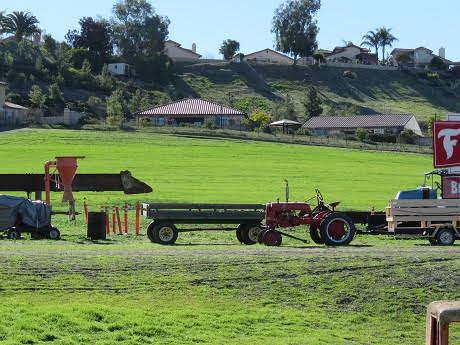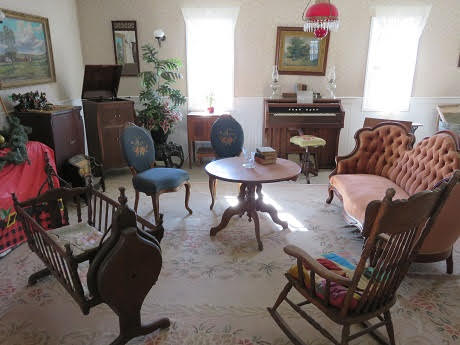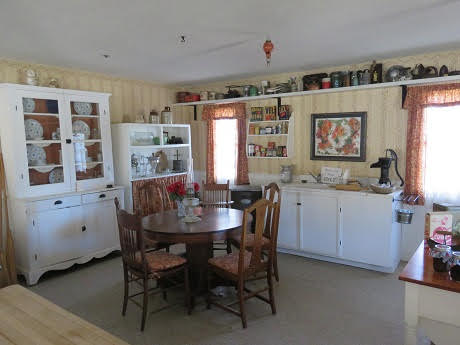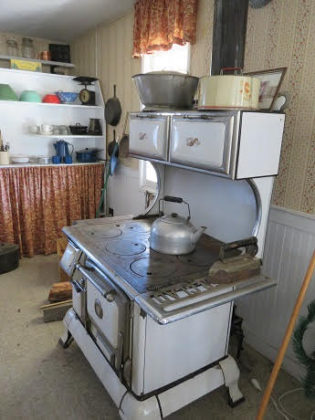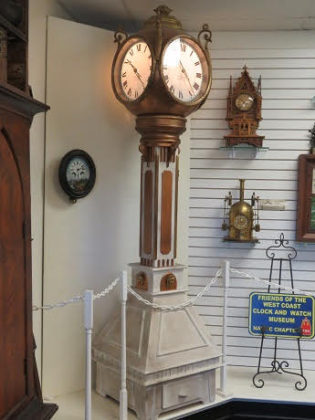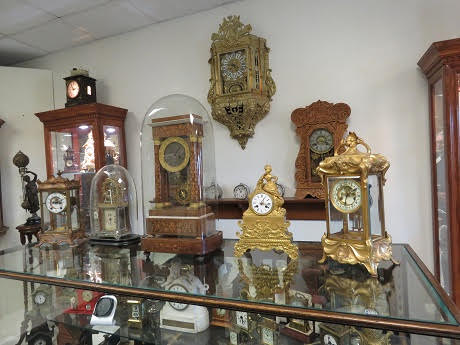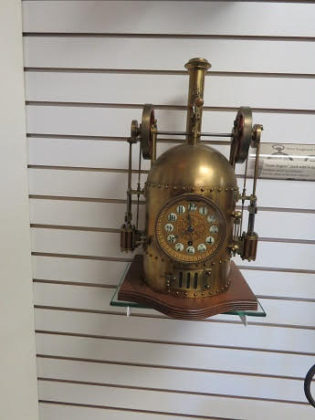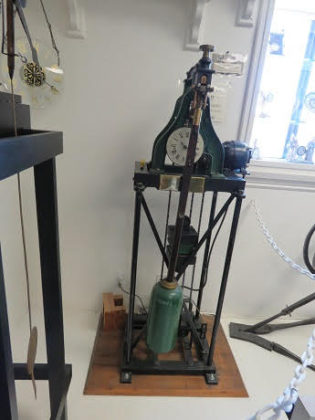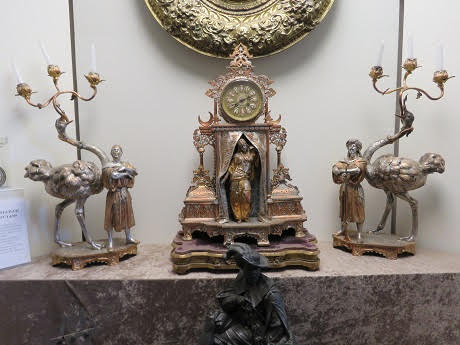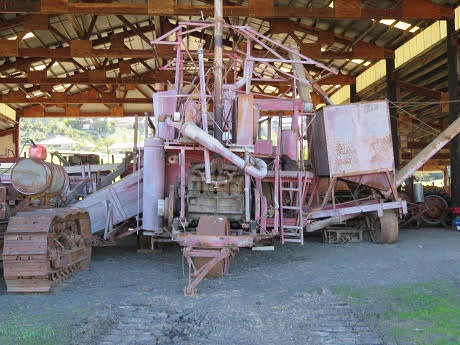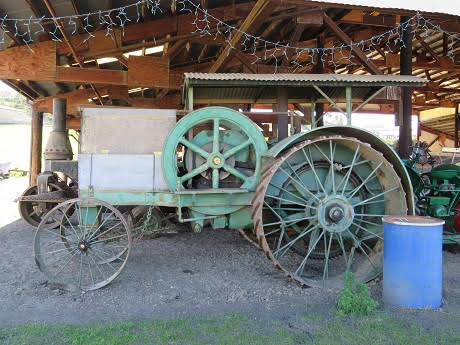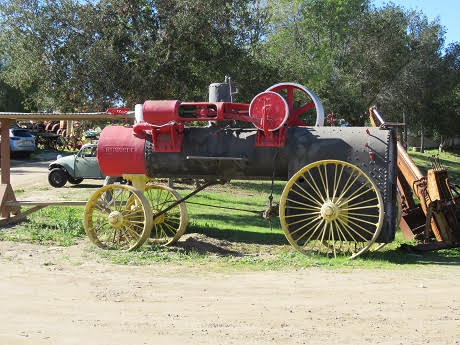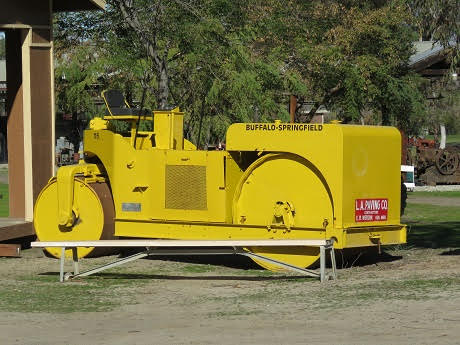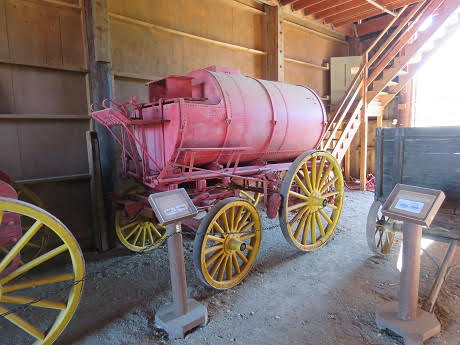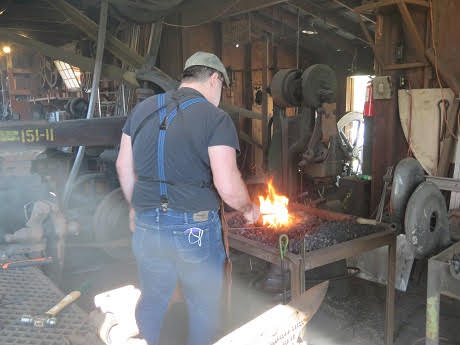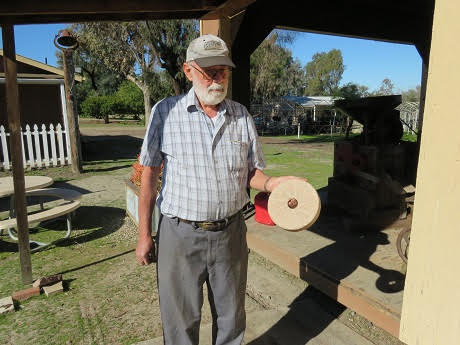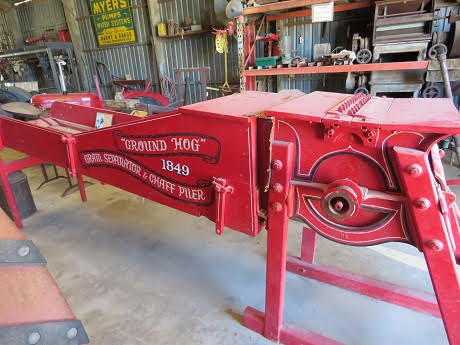By TR Robertson
Located a short drive down a dirt road, called Museum Way, at 2040 N. Santa Fe Avenue, in Vista, is an experience waiting for visitors unlike any other in all of San Diego County. The sign leading you into the Antique Gar & Steam Engine Museum is so much more than what is advertised, all waiting for you inside fifty-five acres of county property, part of the Guajome Regional Park. You will need more than a few hours to visit all the exhibits available for you to take in, or you will need to return several times to say you have truly seen this amazing Hidden Gem.
Director Ashley Jaques has been involved with the museum for 22 years, starting when she was sixteen in a program allowing her to intern a couple of days a week. For the last three years she has been the Director of the Antique Gas & Steam Engine Museum. She said the last few years have been tough as she, along with five staff and volunteers, worked to keep the facility up and running with needed repairs and operations. Ashley said there is also someone who now comes in on Thursday to help and they are looking to hire some additional staff. Jaques added that people come out to the museum not only see the amazing collections they have, but the facility is also used for weddings, birthday parties, anniversaries, reunions, and a variety of other meetings. On my visit the Young Marine organization was conducting a series of classes on the grounds.
The mission of the museum is to “Collect, Preserve and Display examples of mechanical ingenuity and crafts associated with the early days of the American Farm and rural community through exhibits, demonstrations, activities and programs, displaying the Art of Invention.” They focus on the years 1849 through early 1960’s of Early American life and technology, although they do have some displays that go a bit further back in time.
Docent Virgil White and Travis Durst spent several hours escorting and educating me about all the museum has to offer visitors. Virgil has been involved since 1971. He said the museum was founded after a group of friends had visited an antique tractor show and decided their love of these types of antiques and other equipment and engines, needed a place to be displayed. They had started out as a branch of the EDGE&TA (Early Day Gas Engine and Tractor Association). Searching long and hard and after many meetings and some negotiations, the group finally found a home in this 55-acre section of Guajome Regional Park. Volunteers solely built the majority of the first buildings and display areas. This Living History Museum is a non-profit organization, with numerous volunteers who love a variety of different machines and engines and put in hours of volunteer time helping maintain, repair, and build the various donations they are constantly receiving from all over California and other states. As the museum has become better known they receive phone calls and emails from people wishing to discard older equipment that might fit into one of the display areas on their grounds. One family even funded the building of a huge hanger area to house some of the larger farm machinery.
The grounds currently consist of over twenty barns, halls, buildings, exhibits, workshops, and other display areas as well as playgrounds, stages, open air venues, offices & gift shop, trails, and parking areas. Also on the property are several acres of the last producing wheat farm acreages where volunteers take care of harvesting, baling, and processing the wheat. Travis said currently Turkey Red Wheat, low gluten, is being grown. Many people from around the area purchase the ground wheat and when the grist mill is operating many people will bring in a variety of items to be ground, such as corn for corn meal. There are numerous harvesting machines, both steam and gas driven, on the property as well as tractors to pull some of the machinery. A number of mills, dating before the 1900’s, are also on display. The oldest machine on the grounds is an 1849 Ground Hog Grain Separator and Chaff Piler which was once a pile of rubble and was meticulously put back together and reassembled to return to its original form.
Highlighting some of the displays and exhibit areas visited, the Farmhouse is a display of an early 1900’s home featuring beautiful antique furniture and a classic early kitchen with a wood burning stove. The stove is used occasionally, and the farmhouse is the scene of school day programs and craft days for children. We wandered through the California Barn, the Assembly Building, and the Harvester Barn, all filled with a variety of farm equipment and machinery donated by groups like the LA Paving Company. The Lima Bean harvester is unique, on loan from private sources. The size of the machinery is impressive, most of the pieces still able to run and many of the pieces restored by the museum’s volunteers. You will see equipment and machinery you have never seen before. In the Harvester Barn, a massive 1917 harvester from Hemet is front and center. It needed six people to operate when in use. Numerous gas and diesel tractors can be found in many of the exhibit barns.
In the Assembly Building, designed for group meetings, I was able to see the West Coast Clock & Watch Museum, a display I did not know existed on the property. Docent John Ginzler pointed out the 1893 original clock tower which the museum received that is from the San Diego Courthouse, displayed high above the meeting area. John has worked in this area for 11 years. Entering the museum, you will see the beginnings of 3-400 clocks and watches on display. The oldest clock in the museum dates to 1710, an English Tall Case Clock. The unique Little Egypt clock, made in Paris and shown at the 1893 Chicago Fair has a fascinating story you will have to hear from John. He said the museum holds a swap meet in June where many of the clocks can be purchased. They also offer classes in clock repair and restoration. Call 760-941-1791 if interested. The Clock Museum is open Saturdays from 10 am to 2 pm.
Up the hill from the Harvester Barn, Virgil, Travis, and myself arrived at the Blacksmith and Wheelwright Shop, where activity was in full swing. Blacksmith instructors David Gottfredson and Andrew Albert were conducting classes for those interested in learning this trade. Fires were burning and the sound of hammering on anvils echoed through the barn. Andre said many of the students were working on a variety of antique pieces and many were learning the trade. An interesting large art piece hangs on the shop wall made from students adding various pieces they made to the work. Classes run the first three Thursdays of every other month and the shop is open Saturdays from 9 am to 3 pm. For more information contact the Museum.
Just past the Blacksmith shop we met John Granata who runs the museums large sawmill where timber is cut into long planks, many available for purchase to use in a variety of ways for furniture or artistic pieces. The original steam boiler that ran the operation, before electricity, can be seen. John pointed out that Chester Huffman and Rudy Dremely also were interictal in assembling and getting the sawmill set up. During the June and October Museum Open House the saw mill can be seen in operation.
Walking down to the Automobile Exhibition Hall we passed a 1954 Tucker Snowcat, once in operation at Big Bear. Travis and Virgil pointed out, when we reached the Automobile Hall, Hollywood has contacted the Museum numerous times to rent a variety of equipment pieces for movie props and many of the automobiles in their collection. Several were featured in “Pearl Harbor” starring Ben Affleck and in “Seabiscuit.” After wandering through the Automobile Hall (look at the photos in the slide show), our next stop was in the Bill Rafael Weavers Barn.
The 4,000 square foot Weavers Barn has 50 looms, one of the oldest dating back to the early 1900’s, the Appalachian Frame Loom. Jill Koch provided a quick tour of the facility. There were several weavers working on projects. Classes are offered for beginners and beyond. They meet on Thursdays and Saturdays from 10 am to 2 pm. Classes are $75 each, plus a $45 Museum membership fee. Beautiful rugs are available for purchase as well as artistic pieces. It was pointed out that the Zuest Family Spinners Cottage should be visited, when open, to see the amazing work done on the spinning wheels.
Our final stop was at the Short Track N-Scale Model Railroad Club Exhibit. Steve Moss provided information about the beautifully designed displays and the future for the displays. Those visiting can spend hours looking at the Donner Pass Exhibit modeling the Southern Pacific Railroad, mid 1960’s, from Roseville, Calif. to Sparks, Nevada. The detail is amazing. These are N-Gauge models, not the smallest, although in coming weeks the small model, Z-Gauge, will be on display from another club. A sizable portion of the existing display is being taken down, rebuilt, and designed to extend the Donner Pass Exhibit. This will be a multi-year project making the Museum Exhibit one of the largest in the county. A large library also exists with model train magazines dating back to the 1940’s. The exhibit is open from 9 am to 1 pm on Saturdays. Those interested can go to www.agsem.com or email modeltrains@agsem.com or call 760-941-1791.
As we walked toward the exit we passed by the largest gas engine on the property, a 300 hp Allis Chalmers Engine, once used to process sugar beets into sugar. We also walked past Steam Engine Row, the Railroad Depot that provides small train rides for children, Gas Engine Row and the Gristmill as well as the machine shops the volunteers use to repair and rebuild many of the donations to the museum.
The Antique Gas & Steam Engine Museum is certainly Vista’s Hidden Gem, offering a truly memorable and unique experience for those visiting. There are so many different options for people to either see or experience. The Museum is currently open Wednesdays thru Sundays from 10 am until 4 pm. Museum membership is available. The gift shop offers a variety of items to remember your visit. Daily rates are Adults $5.00, Seniors $4.00, 6-12 $3.00 and under five free. The web site is www.agsem.com and the phone number is 760-941-1791.
The next big event for the Museum will be the Antique Engine & Tractor Shows Museum Open House June 18th, 19th, 22nd and 23rd where a majority of the equipment and machinery will be operating.




